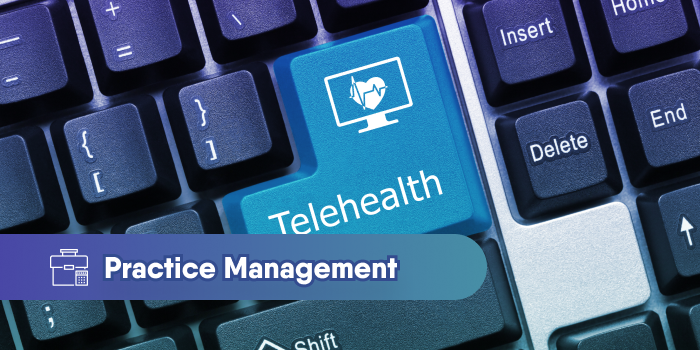Automate Your Front Desk: Patient Scheduling with Conversational AI
On the surface, scheduling patients might look like a basic administrative task. But for many small clinics, it's often perceived as a permanent...
6 min read
Gregory Vic Dela Cruz : 8/12/25 3:00 PM

Running a modern clinic means managing more than appointments and charts. Patients expect 24/7 answers about refills, bills, and products; teams need faster ways to schedule, verify insurance, and process payments. Done manually, these tasks consume hours, create bottlenecks, and drain morale. Conversational AI changes the game by handling routine requests automatically—accurately, securely, and at any hour.
In this blog, we’ll explore practical AI workflow automation tools for medical office operations. You’ll see how chatbots and background automations can process prescription refill requests, manage billing inquiries, and even support a clinic’s online store for supplies or skincare. We’ll map common use cases, share best‑practice checklists, and point to tool categories that integrate with your EMR/PM and payment stack.
Ready to shorten queues, reduce manual follow-ups, and create smoother workflows? Let’s dive into the tools you can use this month.
The best AI workflow automation tools for medical office teams cover three fronts:
When these layers connect, requests flow from the patient to the right system and back again—without repetitive staff work.
Start with a single high‑volume workflow—like refills or billing questions—then expand to scheduling and ecommerce. By layering capabilities, you’ll see compounding time savings and a calmer front desk.
Patients call for simple updates—“Did my refill go through?” “What’s my balance?”—but wait on hold or play phone tag. Staff context‑switch, re‑verify identity, and look up information that could be automated. Conversational AI answers common questions instantly, collects missing details, and creates a ticket only when human review is needed.
Scheduling, billing, messaging, and storefronts often live in separate apps. Staff copy/paste data across systems, increasing errors. AI‑driven workflows pass structured data between modules (e.g., from chatbot to PM to payment gateway), so information is entered once and reused safely.
Refill requests arrive via voicemail, fax, and portal messages. Without rules, everything lands in the provider inbox. AI can screen for med, last visit, and required vitals/labs, then route eligible requests for quick sign‑off while gathering missing info from patients automatically.
Patients struggle to parse statements and coverage. Staff spend time explaining EOBs and collecting small balances. AI can send plain‑language answers, link to secure text‑to‑pay, and set payment plans—freeing staff for exceptions.
Clinics launch online stores but see low conversion due to clunky checkout or unanswered questions. A chatbot can recommend products, check order status, and guide exchanges. With inventory and payment integration, staff only handle escalations.
These problems are solvable with targeted automation. Let’s look at concrete examples to deploy for immediate impact—without overhauling your EMR/PM stack.
Deploy a HIPAA-friendly chatbot on your website and a secure SMS channel. Typical skills include appointment booking, refill intake, billing FAQs, order tracking, and basic triage (“which service do I need?”). Ensure clear identity verification and human escalation for sensitive issues.
Pair self-service booking with real-time insurance checks. Patients see accurate availability; eligibility runs at booking and 24–48 hours before the visit. Exceptions land in a staff queue with reasons (inactive plan, PCP mismatch) so you fix coverage before the appointment.
Want to learn more about how to use AI for patient scheduling? Read more here.
Automate statement delivery, Q&A, and collections through digital channels. Offer text-to-pay and payment plans, then auto-post transactions to your PM. Provide plain-language EOB summaries to reduce calls.
List approved products with clear disclaimers and fulfillment options (in-clinic pickup, ship-to-home). Add a chatbot that recommends items based on visit type and FAQs (returns, shipping times). Sync inventory to avoid backorders and use order-status messaging to reduce “where is my order?” calls.
Use AI to read clinical documentation and suggest accurate ICD-10, CPT, and HCPCS codes in real time. This reduces errors, shortens claim cycles, and improves reimbursement rates. AI coding tools can also flag missing documentation before claims submission.
AI can streamline refill requests, prior authorizations, and patient communications about prescriptions. Patients can request refills via chatbot or SMS, and the AI routes them for provider approval, checks for drug interactions, and sends notifications when ready.
AI systems can monitor incoming lab results, flag abnormal values for urgent review, and automatically send normal results to patients with plain-language explanations. This reduces delays, eases provider workloads, and ensures timely follow-up care.
With these seven medical AI tools in place, your clinic can automate the bulk of repetitive administrative and low-complexity tasks, allowing staff to focus on high-value patient care and strategic growth initiatives.

Most admin tasks start as a question. Curogram’s HIPAA‑compliant, two‑way texting and secure messaging turn those questions into structured workflows. Patients can confirm appointments, submit refill details, ask about balances, and receive checkout links—without calling the front desk.
Because Curogram pairs automation with human handoff, your team stays in control while AI removes repetitive steps—exactly what clinics need to scale admin and shop workflows without adding headcount.
Patients increasingly want to buy recommended items directly from you—whether that’s skincare, orthotics, or home monitors. Pair your store with a chatbot to answer product FAQs, sizing, and refill timing. Use identity‑verified messaging for order lookups, exchanges, and pickup coordination to keep PHI separate from retail data.
Keep checkout short and mobile‑first. Offer wallet payments and store consented cards on file. Be transparent about shipping/pickup times and return policies—bots can deliver this info instantly, which reduces “just checking” calls. For medically sensitive products, display disclaimers and route clinical questions to staff.
Do not commingle treatment advice with retail chat; instead, use the bot to schedule a consult if a patient needs clinical guidance. This preserves compliance and keeps the buying experience smooth. With well‑designed medical AI tools, your store becomes a helpful extension of care—not a distraction for staff.
From refills and billing to online orders, conversational AI now handles the high‑volume, low‑complexity work that once flooded your phones. By layering AI workflow automation tools for medical office operations—messaging, scheduling, eligibility, payments, and e‑commerce—you free your team to focus on clinical moments that matter.
Curogram helps clinics do this safely with HIPAA‑compliant two‑way texting, smart automations, digital forms, after‑hours responders, text‑to‑pay, and audit‑ready trails. The result: fewer bottlenecks, faster responses, and happier patients.
Ready to see it live? Request a Curogram demo and turn admin and e‑commerce busywork into a streamlined, scalable workflow.

On the surface, scheduling patients might look like a basic administrative task. But for many small clinics, it's often perceived as a permanent...

In the fast-paced and ever-evolving landscape of modern healthcare, the efficiency of a medical office is paramount to delivering exceptional patient...

Healthcare professionals (HCPs) consider finding a way to improve healthcare quality in the United States a critical undertaking to succeed in...